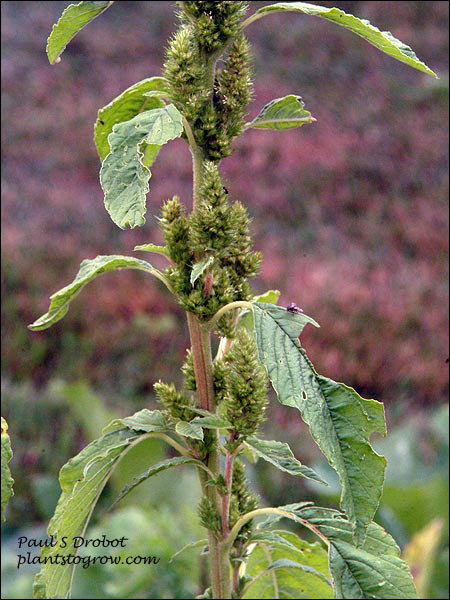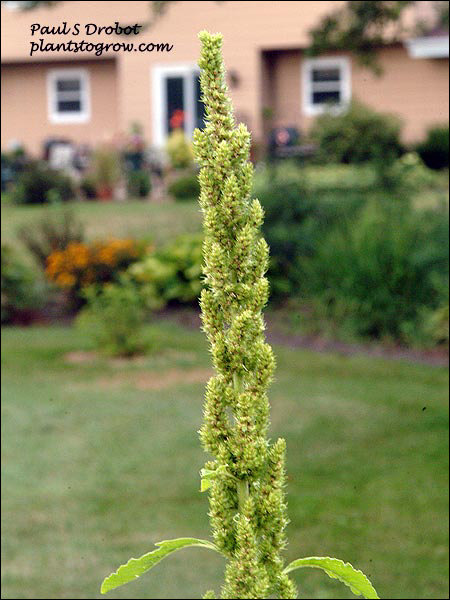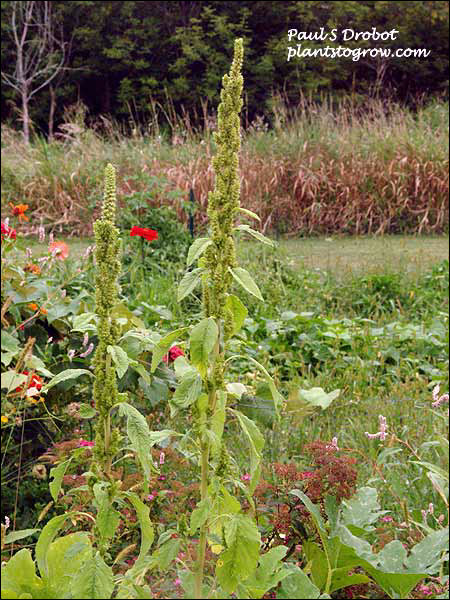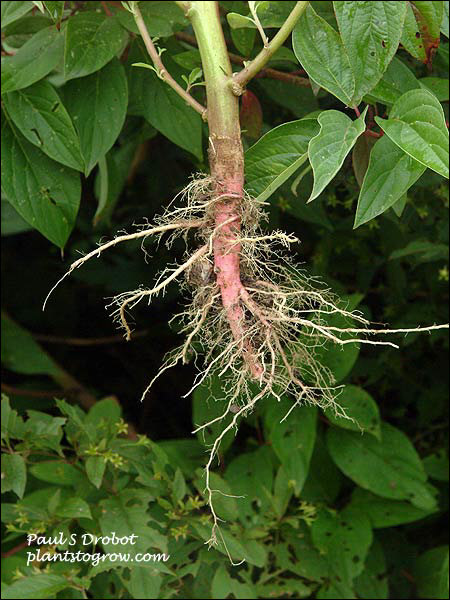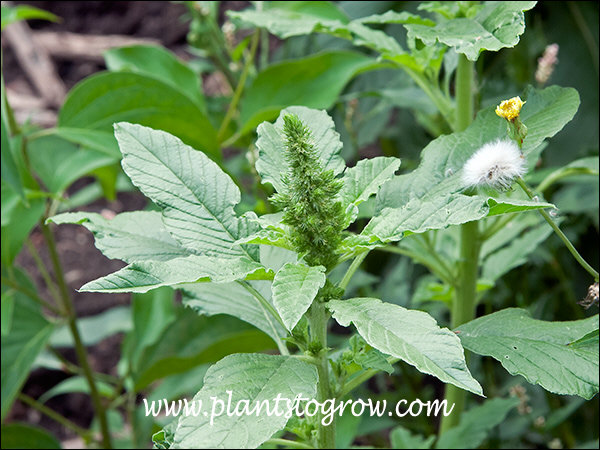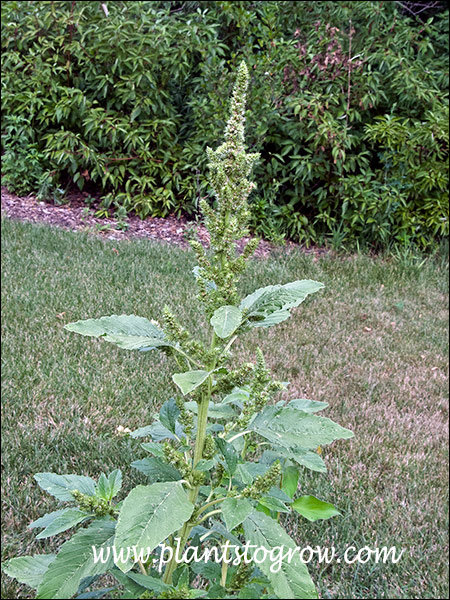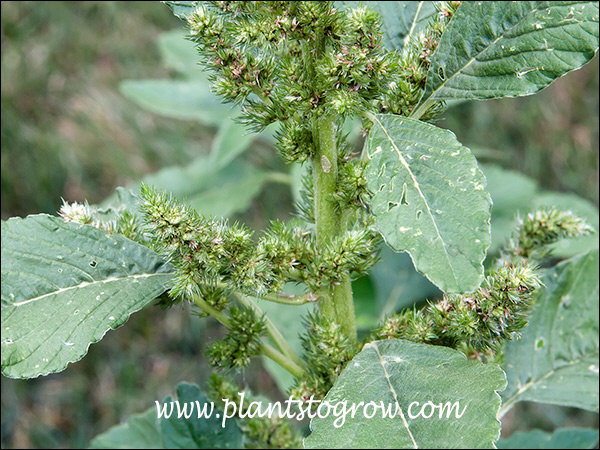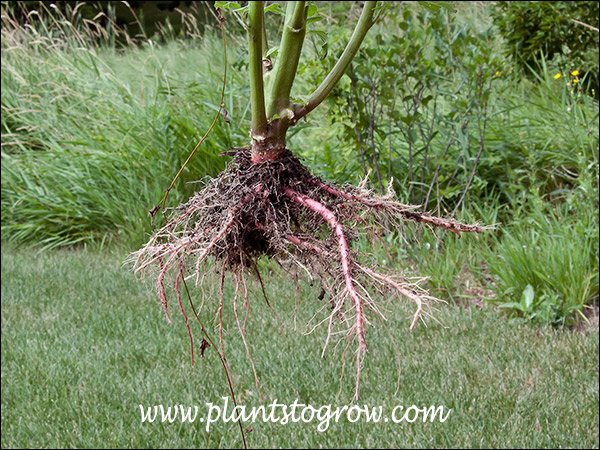| Description | Pigweed (Amaranthus retroflexus) is a tall annual weed that produces a red tap root. |
|---|---|
| Plant Type | Annuals, Weeds, Site author's observations |
| Hardiness Zone | 4 |
| Sunlight | full |
| Moisture | average |
| Soil & Site | average |
| Temperature | Will succumb to the first frost. |
| Flowers | small, green, wind pollinated male and female (monoecious) on same densely crowded terminal panicle. Smaller panicles are also produced in the axils of the leaves along the stem. |
| Fruit | Each plant is capable of producing 150,000 seeds that remain viable for up to 40 years. Plants are capable of producing seeds 8 weeks after germination. |
| Leaves | simple, alternate, ovate, dull green, may have a wavy margin. |
| Stems | erect branching freely, may have short hairs, especially near the upper portions, basal stems may be red colored |
| Roots | short tap root, may or may not be red. |
| Dimensions | up to 6 feet tall |
| Propagation | It reproduces freely by seeds. |
| Misc Facts | The leaves contain saponin and have been used for soap. The seeds and leaves are also eaten. It is a good dynamic accumulator. They had the nickname Careless-weed because the careless farmer let them grow in their fields. AKA: Rough Pigweed, red-root amaranth, redroot pigweed, red-rooted pigweed, common amaranth, pigweed amaranth, and common tumbleweed |
| Author's Notes | The longer this weed is allowed to grow in the garden, the harder it is to pull. |
| Notes & Reference | #19-Common Weeds of the United States, #49-The History and Folklore of North American Wildflowers, #81-Weeds of Northern United States and Canada) |

Cart
